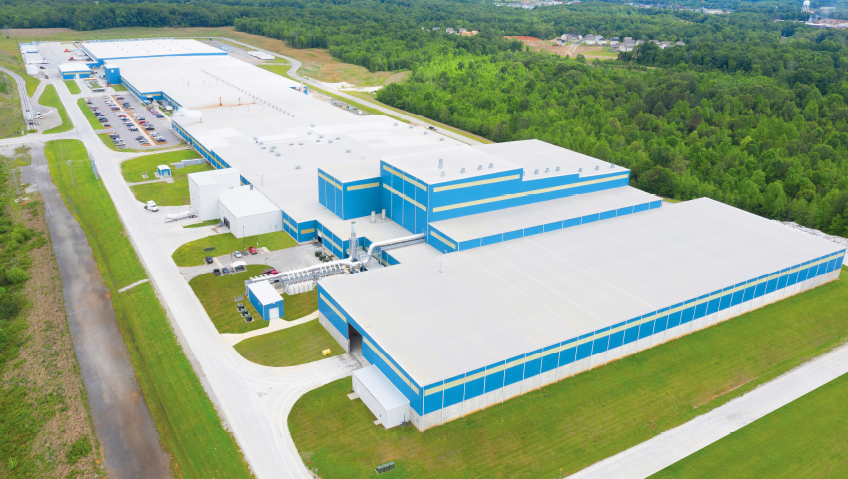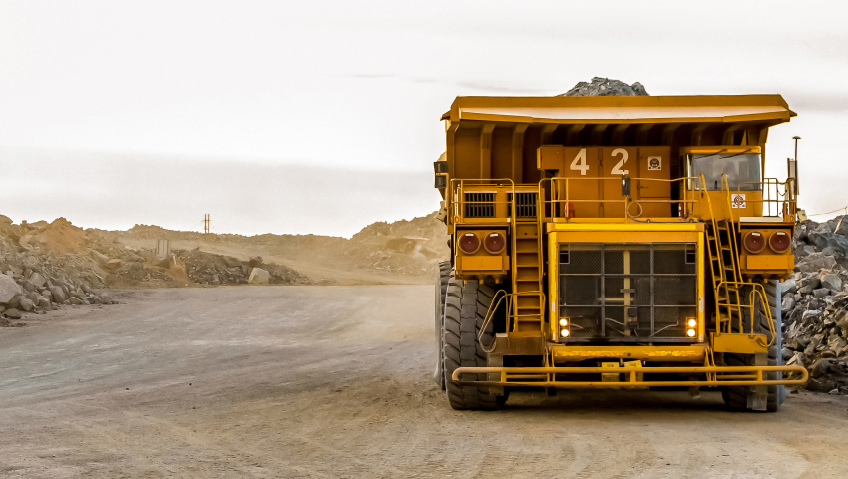Capstone has expanded its offerings and completed a rebrand since Business in Focus spoke with the company back in late 2017. Originally called Capstone Turbine Corporation, the Van Nuys, California-based firm changed its name to Capstone Green Energy Corporation on Earth Day—April 22—of this year. While it is as committed as ever to cost-saving, eco-friendly energy solutions, the name change reflects the company’s much bigger vision.
At the time we last spoke, Capstone Turbine primarily designed and sold proprietary electricity-generating microturbines. These products can be used to generate heat and power at the same time in a process called co-generation or combined heat and power (CHP for short) and produce minimal noise, vibrations, and ultra-low emissions.
Capstone has shipped over ten thousand of its unique “air-bearing, microturbine power generation systems, around the world,” according to President and Chief Executive Officer Darren R. Jamison.
Shortly before COVID-19 struck in early 2020, the company launched a new direct sales and solutions division.
“We realized we were leaving customers a little short as far as green energy solutions go. A lot of our customers would buy the microturbine, then they would want to add some battery storage or solar PV.” A decision was made to expand the business. “We’ve gone from a single product company to being an energy service provider with multiple products and storage solutions,” he says, with pride.
Today, Capstone has four distinct business lines: Energy as a Service (EaaS), Energy Conversion Products (ECP), Energy Storage Products (ESP), and Hydrogen Sustainable Products (HSP).
The Energy Conversion Products business line is responsible for microturbines, which remain a flagship product. Its microturbines range from the C65 model, capable of generating 65 kW of power, to the C1000S, capable of generating 1,000 kilowatts (kW). These microturbines run on natural gas, kerosene, aviation fuel, biogas, butane, propane, and other fuels and can be arrayed together in a microgrid for enhanced power generation and maximum efficiency.
The Energy as a Service segment contains Capstone Factory Protection Plan or FPP that offers extensive product life cycle coverage. The company also provides spare parts and repair, training for certified service providers who assist clients in the field, and the Capstone Service Network (CSN). The CSN monitors and records performance data of customer-installed microturbines. The EaaS division also oversees product rentals, a service that was introduced roughly two years ago and is quickly growing in popularity with customers.
“It’s about long-term rentals. For us, long-term is a year to ten years. It’s for customers who don’t have the capital dollars or are uncertain about their business in today’s turbulent times. Oil and gas customers are a great example. They may have a marginal producing oil or gas well. If oil prices drop, they want to close it in until prices increase again. We’ve also done a lot of rentals in cannabis and other areas where folks need power quickly,” Jamison explains.
The Energy Storage Solutions business segment designs and manufacturers hybrid energy stations and energy storage systems for lithium-Ion batteries, among its other duties.
Capstone’s fourth division consists of Sustainable Hydrogen Products. The company is eager to explore opportunities in this burgeoning sector with its own line of hydrogen-based products and solutions.
“We started a ten percent blended hydrogen product about a year ago. We’ve announced publicly that we will go to a thirty percent hydrogen blend by next spring,” says Jamison. “We’ve patented a new innovative hydrogen fuel injector to take us to one hundred percent hydrogen. We’re kind of walking that product through the development process… I think hydrogen will be a big part of our business going forward—blended or one hundred percent hydrogen. It’s not a matter of if, but a matter of when.”
About half of Capstone’s clients are based in the United States, with the rest of the world taking up the remainder. The firm’s power-generating products are popular in areas with high energy costs, such as the eastern and western U.S. seaboards. It has also expanded its market reach in Florida, Texas, Minnesota, Michigan, and other more central states.
The company’s products are sold through both direct sales and a global distribution network. Today the distributor network is comprised of roughly seven hundred people and accounts for about ninety percent of sales, Jamison says.
The company serves the natural resources, oil and gas, critical power supply, renewable energy, transportation, marine, cannabis cultivation, and brewery sectors, among others. Capstone’s products are popular with organizations that want to reduce energy costs or improve the environment and are well-suited for hospitals, data centers, hotels, and any location where it is critical to have a continuous, reliable supply of electricity and thermal.
Given climate conditions like frequent hurricanes, wildfires, or the recent ice storm that knocked out the Texas power grid, having a dependable energy source is more important than ever, notes Jamison. Companies and people “should care about resiliency. The reliability of the electric grid is getting lower, and outrages are getting more frequent and lasting longer. Losing power for more than a few hours is painful for any business and if it’s longer than a few hours, it can be fatal.”
Expanding its scope has allowed Capstone to serve its clients better. “A lot of customers buy three different energy technologies and try to get them to all work together. It’s a lot cleaner and easier to have one highly qualified solution provider,” he says.
He points to the firm’s biggest U.S. installation, which is based at Mohawk Carpet and Tile in Tennessee, as an example of how clients can reap several benefits by embracing a comprehensive energy solution.
Mohawk is “one of the largest carpets and tile producers in the world. We put in a five-megawatt CHP installation at their Tennessee location. We provide five megawatts of electricity, and we’re taking all the exhaust heat from the microturbines and pumping it into the side of the building, basically to cure the tile—direct drying the tile—so they don’t have to run the natural gas boilers to dry the tile.”
Capstone designs and manufactures its own products but often contracts out the installation to local firms that are familiar with the local building, utility, and energy codes in their given regions. Sometimes, it also develops products in partnership with other companies.
Collaborating with renewable energy company 24/7 Solar, for example, Capstone modified a 200 kWe (kilowatt-electric or one thousand watts of electric capacity) turbine to create a new turbine called Heat2Power, which converts solar energy to electricity and heat. In another partnership, Capstone and energy firm Baker Hughes developed a series of low-emission NOVALT gas turbines capable of generating over 60 megawatts for the industrial and commercial CHP sector.
In addition to its head office and manufacturing facilities in Van Nuys, Capstone maintains a plant near London, England. The U.K. plant “started as a service hub, and it turned into more of a remanufacturing and customer training center. As machines in the field start to get older and we start getting used parts back from the field for maintenance, instead of bringing these parts all the way back to the U.S., inspecting them to see if we can remanufacture them, it made more sense to take a lot of those parts to the U.K. for remanufacturing or recycling,” explains Jamison.
As with all other firms in North America, the advent of the COVID-19 virus had a major impact on Capstone.
“We ended up furloughing forty percent of the workforce, and the Capstone leadership team members and higher compensated employees took twenty-five percent pay cuts but continued to work full-time. The mid-management folks took fifteen percent pay cuts. As hard as it was, it was important that we acted quickly. We installed cleaning stations, hand washing stations, Plexiglas. All the stuff that became the norm, we got in the first few weeks,” says Jamison. “We took chairs out of our lunchrooms, had people work at home whenever we could to have them work safely.”
The company helped furloughed staff with medical coverage and hired back as many employees as possible as quickly as possible.
The company currently has roughly 115 employees, down from 160 to 165 in 2017, and continues to emphasize cross-training and efficiency, according to Jamison. Workers are trained to handle numerous tasks across different departments. The service part of the business is “almost all paperless,” and there is a focus on online training.
In addition, Capstone “is very focused on employee health and welfare. We have a Capstone Cares program, where we try to do things for local communities: blood drive, cleaning a park, feeding the homeless, holiday toy drives,” he says. “We also have a Capstone Culture Club that coordinates employee events such as potlucks, events around holidays, going to a baseball game, bowling—as a way to promote team building and encourage our employees to get to know one another and do things that fit our corporate culture of helping people out.”
While company revenue remained relatively steady during the initial stages of the COVID-19 pandemic, dealing with the economic havoc wrought by the virus was a significant challenge. “I think the hardest part was fear of the unknown—not knowing what was going to happen and what was going to happen next to our vendors, distributors, and customers. We managed to stay open the entire time,” he says.
In the future, Jamison sees tremendous opportunity in the green energy sector. More electricity is being generated using renewables, and people increasingly “want to work for green companies and buy sustainable products.” He believes that companies that can demonstrate real progress in their steps to improve energy efficiency and reduce emissions have the opportunity to communicate that to their customers and potential customers. It seems likely that at some point, that will be a competitive advantage, especially for high-impact businesses like hospitality and consumer brands.
He returns to the company’s recent decision to expand beyond just selling eco-friendly microturbines to become a more rounded firm. “For us, we kind of want to be the Amazon of green energy, be that one-stop-shop that customers come to and say, ‘When I look at my energy use, whether it’s electric or thermal energy or backup power, Capstone Green Energy is the company I turn to.”













